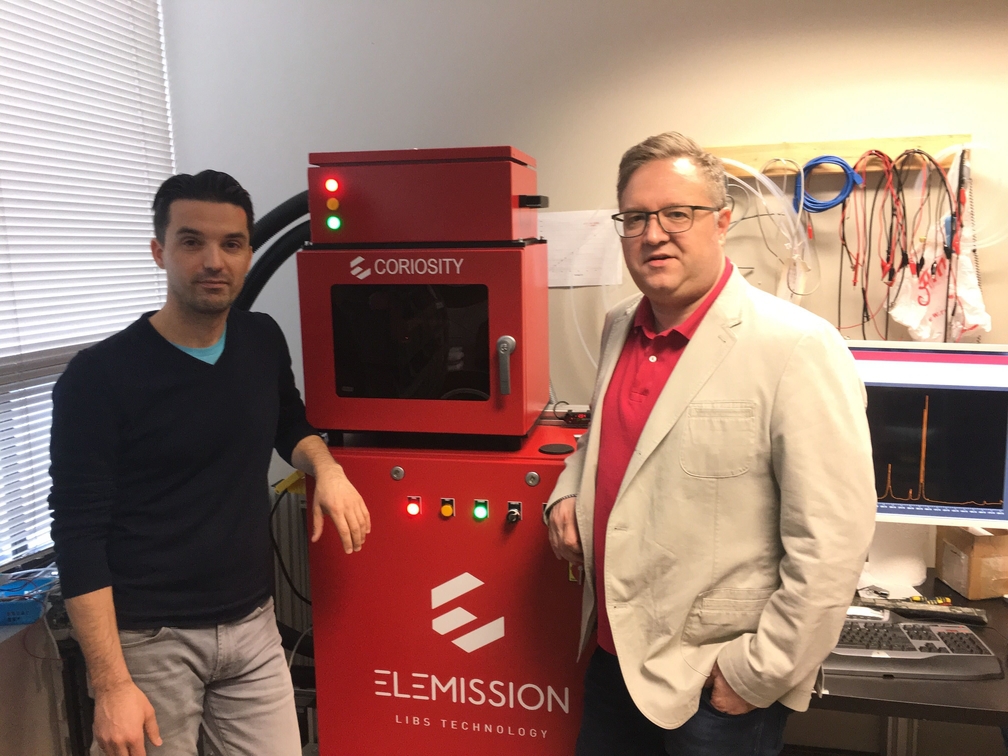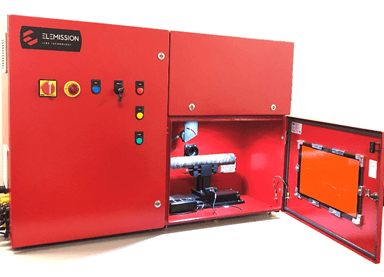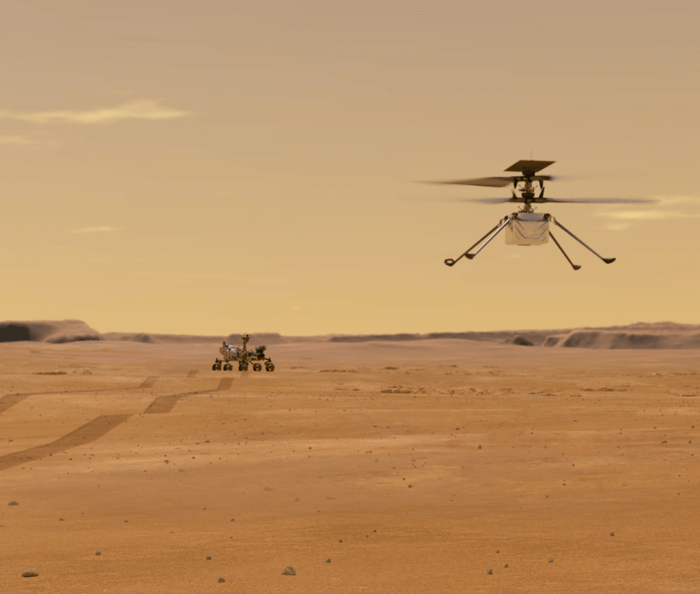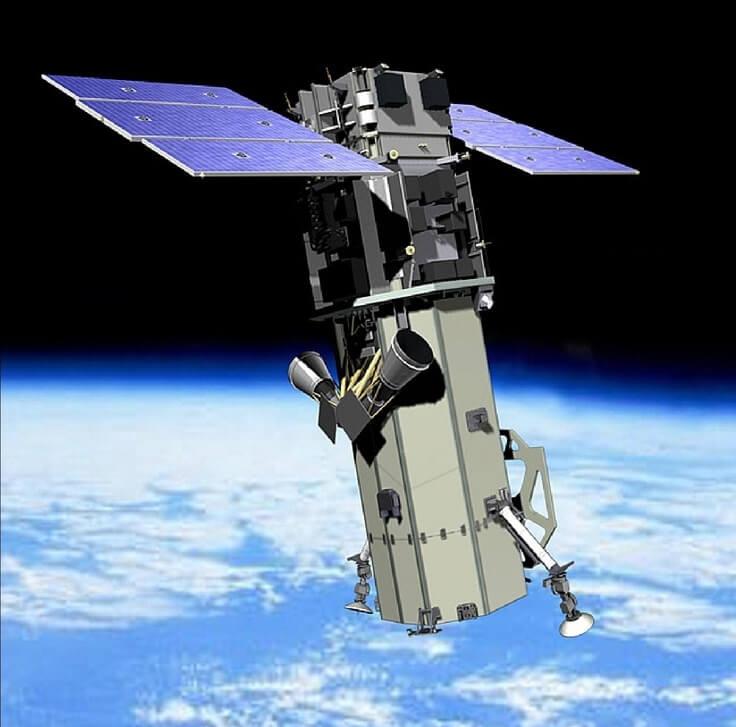Advancement and long term
Advancement of the knowledge in space science and technology
Innovative space technologies
T-MARS will advance the knowledge regarding two innovative space technologies:
- a hyperspectral camera mounted on a drone as a reconnaissance tool for rover operations on Mars;
- an innovative LIBS instrument developed by the Canadian company Elemission to characterize the composition of core samples.
Currently commercialized for the mining industry, ELEMISSION's Coriosity LIBS instrument (figures 1 and 2) has won many distinctions, including Innovation of the year at Pittcon, and semi-finalist at #disruptmining18. We will here test this innovating technology in the perspective of a space-like mission.

Figure 1 : Lütfü Çelebi Özcan (co-founder of ELEMISSION) and François Doucet (co-founder and CEO of ELEMISSION) with the Coriosity LIBS instrument. Image provided.

Figure 2 : Latest prototype of the LIBS Coriosity instrument. Image provided.
The first Martian drone was launched as part of the Mars 2020 mission. The Mars Helicopter Scout (MHS) Ingenuity will be deployed in 2021 at its arrival on the planet Mars (figure 3). It will be used to investigate difficult to reach destinations (e.g. cliffs, caves and deep craters) and to locate interesting targets to be investigated by the Perseverance rover [1]. The helicopter is a technology demonstrator and therefore does not carry any scientific payload (it does, however, contain a high-resolution camera). The use of a hyperspectral sensor mounted on a drone to characterize the composition of gossans on Earth is yhe first of its kind. This will help position Canada as a leader in this technology, considering that drones will be sent on future Mars missions to locate potentially habitable environments such as paleo-hydrothermal systems.

Figure 3 : Mars Helicopter Ingenuity above Perseverance rover on Mars. Artist's Concept, NASA/JPL-Caltech, 2020.
Knowledge about planetary exploration
We will also advance knowledge about planetary exploration by conducting field work, data analysis and preliminary studies related to the definition of new planetary science research aligned with the priorities of the scientific community [2]. More precisely, we will document a geological process that has shaped the surface of the Earth and Mars, characterize biosignatures and develop detection methods applicable to space missions.
Knowledge about remote sensing of Canada's land cover and permafrost
This project will also advance knowledge related to the remote sensing of land cover and permafrost in Canada. We will acquire spectral measurements using a spectroradiometry instrument with recognized capabilities to validate data from the active WorldView-3 satellite mission in orbit around the Earth (figure 4). Hyperspectral measurements acquired with an innovative instrument, a hyperspectral sensor onboard a drone, will also be used to demonstrate the scientific value of hyperspectral observations for geological applications. The results of the project will contribute to the Space Strategy for Canada by :
- Inspiring the next generation of Canadians to reach for the stars;
- Ensuring Canada’s leadership in acquiring and using space-based data to support science excellence, innovation and economic growth;
- Position Canada’s commercial space sector to help grow the economy and create the jobs of the future.

Figure 4 : Artist's Concept of the WorldView-3 satellite deployed in orbit. (DigitalGlobe)
Long-term research impact
The knowledge gained about Mars like minerals, hydrothermal and alteration processes, as well as the capabilities acquired through the direct use of various instruments, will pave the way for future exploration of Mars. The variety of gossans that we will sample will be useful for comparison with hydrothermal systems detected on Mars from orbit or on the ground. The objectives of the T-MARS research project are therefore novel, as no such thorough analysis of the horizontal and vertical composition of the gossans involving spectral, elemental, mineralogical, and biosignature analysis has been undertaken to date.
It is also the first time that gossans will be investigated in depth from the global to the microscopic scale. The HQPs and students trained during this research project will be at the heart of this new knowledge. They will thus be ready to actively participate in future exploration missions.
The proposed research will have a significant impact on the earth's geology, as gossans are of great economic and environmental importance. They are often indicators of metal deposits, and they consist of acid altered deposits that can be studied as natural analogues to the interactions between acid mine tailings and permafrost to determine if they have a measurable environmental impact on watercourses [3]. Our understanding of water-rock interaction in cold climates and acid rock drainage [4] will benefit from this work.
References
NASA (2019) Mars Helicopter to Fly on NASA’s Next Red Planet Rover Mission, online (accessed 10-07-2019).
Canadian Space Agency (2017) Canadian Space Exploration - Science and Space Health priorities for Next Decade and Beyond, online (accessed 10-07-2019), Canadian Space Exploration: Science and Space Health Priorities 2017 report.
Williamson et al. (2015) Environmental and Economic Significance of Gossans, Geological survey of Canada, Open file 7718, 102 p.
Dold, B. (2017) Acid rock drainage prediction: A critical review, Journal of Geochemical Exploration, 172, 120-132.